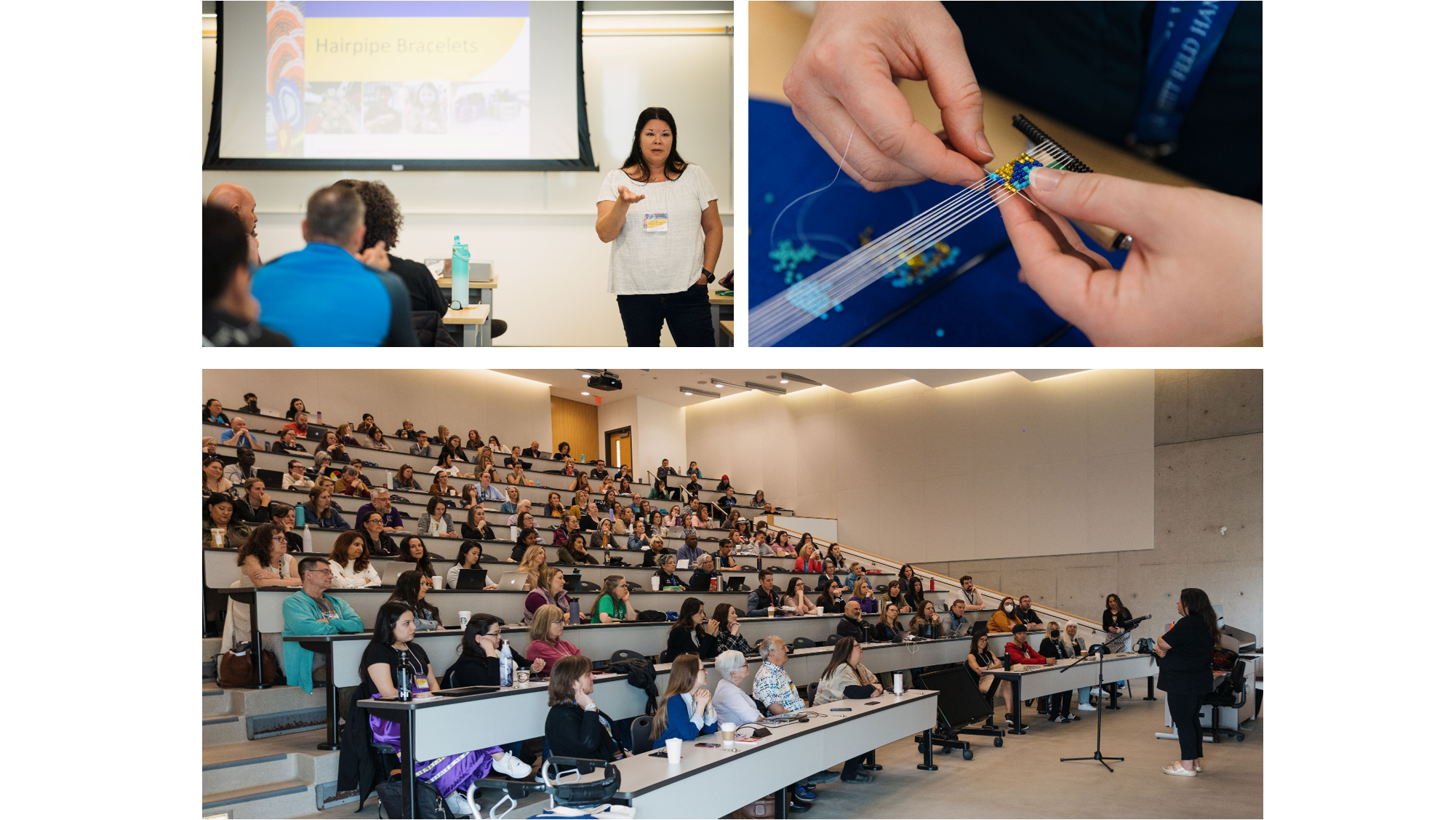Indigenous Mathematics and Education Conference Focuses on Relationships and Reciprocity
With the support of a SSHRC Connection Grant and CanCode Grant awarded to Dr. Ruth Beatty (Associate Professor, Orillia), Colinda Clyne, Anika Guthrie, Christina Ruddy, and their research partners, a two-day Indigenous Mathematics and Education conference took place in April at the Orillia campus. The conference theme was “Relationships and Reciprocity.”
An aim of the conference was to give attendees—including community Elders, knowledge keepers and leaders, educators, and administrators from across the province—an opportunity to explore and discuss the First Nations & Métis Math Voices Project, a comprehensive, long-term, multi-site project that has taken place in elementary and secondary classrooms throughout Canada.
The conference also served as a forum for the 160+ attendees to develop relationships and share experiences, practice, knowledge, and ideas about connections between the mathematical content knowledge of the Canadian math curricula (including coding), and the mathematics inherent in Indigenous technology, design, and artistry.
The formal opening and closing were given by Anishinaabe artist Grandmother Vicki Pawis from the Chippewas of Rama First Nation to ensure that the conference began and ended in a good way. Three-hour workshops were held each day, so that participants could be immersed in the experience of exploring mathematics through Indigenous culture. The workshops examined the mathematics inherent in traditional Indigenous technologies and cultural practices, including looming and the making of hairbone pipe bracelets, medallions, and birchbark baskets (wiigwas makak). Participants considered how incorporating Indigenous pedagogical approaches align with current mathematics instruction and provide insight for creating more inclusive classrooms. They also learned from community research partners as they shared their experiences of the importance of including First Nations and Métis cultures in mathematics instruction.
Eighteen research partners were involved in the organization of the conference, including several student volunteers from the Lakehead community. For a full list of conference organizers and their biographies, please see the conference website.


